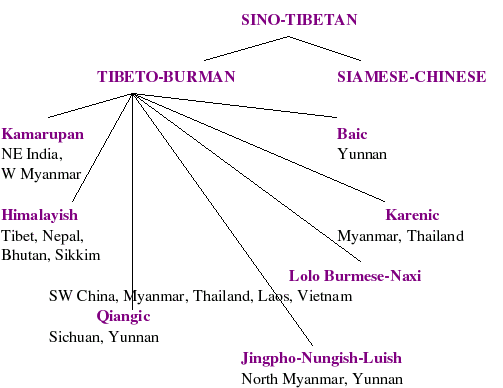
Manipuri (also called Meiteilon, Meiteiron, Meetei and Meithei; Meithei in Linguistic literature) is the official language of the state of Manipur, India. It is the mother tongue i.e. the first language of the ethnic group Meitei (Meetei). However, apart from Hindu Meiteis and the Meiteis following the traditional religion of Sanamahi, Meitei Pangals, i.e., Manipuri Muslims also return Manipuri as their mother tongue.

Although Manipuri native speakers mostly reside in the state of Manipur, there are native speakers in the neighbouring northeastern states of India, notably in Assam, Tripura, Nagaland, and West Bengal. In India, the total number of people who returned Manipuri as their mother tongue numbers 1,270,216 out of which 1, 110, 134 speakers reside in Manipur (census of India, 1991).
There are Manipuri speakers in Bangladesh and Myanmar as well. The Manipuri population was 6000 in Myanmar in 1931 and 92800 in Bangladesh in 1982 as reported in http://www.ethnologue.com/.
There is a need to distinguish Manipuri (Meithei/Meitei/Meiteilon) from Bishnupriya -- a language spoken in Assam and parts of Bangladesh, which has a dominant Indo-Aryan character, especially since the speakers of this language claim that they are the erstwhile aborigines of Manipur. This claim seems far-fetched since for one reason, none of the neighbouring tribes of the Meitei have a reference to the Bishnupriyas in their folklore, whereas the Tangkhul, and the Kabui, among others, mention the Meitei in their folklore. Moreover, both the Tangkhul and Meitei folklore mention that the Tangkhul and the Meitei are of the same descent.
Moreover, the Bishnupriyas claim their descent from the legendary Mahabharata character Babruvahana, the son of the Pandava Arjuna. It may be worth recalling that the mother of Babruvahana was supposedly a princess of Manipur in the epic. However, there is neither Archaeological nor historical proof that the Manipur of the Mahabharata is the same as the present state of Manipur. Also, the official name of the state became Manipur only after it had been incorporated as part of the British Empire, and the Meitei called their kingdom Meitrabak or Kangleipak before the current name of Manipur came into use. So, the Bishnupriya intelligentsia need to re-check their facts before making such a far-fetched claim of lineage and descent.
It may be worthy of mention that Hinduism was introduced as a state religion only in the reign of Meidingngu Pamheiba (Garibniwaj) in the late eighteenth century, while pre-Hindu Meitei chronicles can be dated back to 33 AD.
The advent of Hinduism in Manipur had a considerable influence on the language, in that a lot of Indo-Aryan elements entered the language as borrowings. The Standard dialect, which is based on the Imphal dialect (Grierson 1903) is significantly different from the dialects spoken in Kakching, Andro, Sekmai and the Yaithibi dialect. The latter dialects are comparatively not influenced by Bengali or Sanskrit. The Pangal dialect is another main dialect of Manipuri.